Bolex H16 User
For Practical Bolex H16 Filming
Bolex Company History
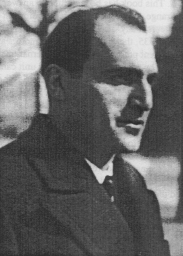 The
story of Bolex starts with the work of Geneva based Polish designer and
engineer Jacques Bogopolsky (shown left in a photograph from the 1930s),
who developed a 35mm cine-camera for the amateur market. The design was
patented in 1924 as the Bol Cinegraphe and although there were other 35mm
amateur cine cameras around, they were later ousted by cameras taking
the more economic sub-standard gauges such 9.5mm and 16mm. Jacques produced
a 16mm camera the Auto Cine Camera in response and this was the first
of his products to be sold under the Bolex name.
The
story of Bolex starts with the work of Geneva based Polish designer and
engineer Jacques Bogopolsky (shown left in a photograph from the 1930s),
who developed a 35mm cine-camera for the amateur market. The design was
patented in 1924 as the Bol Cinegraphe and although there were other 35mm
amateur cine cameras around, they were later ousted by cameras taking
the more economic sub-standard gauges such 9.5mm and 16mm. Jacques produced
a 16mm camera the Auto Cine Camera in response and this was the first
of his products to be sold under the Bolex name.
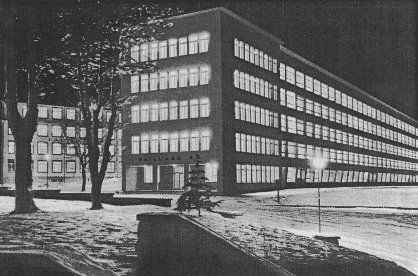 In
the early 1930s Jacques sold the business to the Paillard company, which
was originally founded by Moses Paillard in 1814 and was known for making
musical box movements.
In
the early 1930s Jacques sold the business to the Paillard company, which
was originally founded by Moses Paillard in 1814 and was known for making
musical box movements.
At the end of the 19th century the Paillard family joined the Thorens family by marriage and went on to produce a wide range of products including phonographs, gramophones, clockwork motors and even typewriters.
Following the sale, the Bol company moved to the St.Croix base of Paillard S.A. to form Paillard-Bolex where the designs of Jacques continued to be produced and developed.
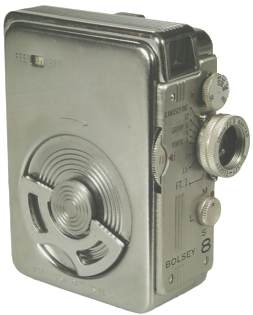 Jacques
left the new Paillard Bolex company in the early 1930s to join the Pignons
company at Ballaignes in Switzerland and developed the Alpa series of
high quality 35mm still cameras, later moving to the U.S. to produce the
Bolsey 35mm still cameras and finally the Bolsey 8 one of the smallest
cine cameras ever made (left). Jacques Bogopolsky died in 1962.
Jacques
left the new Paillard Bolex company in the early 1930s to join the Pignons
company at Ballaignes in Switzerland and developed the Alpa series of
high quality 35mm still cameras, later moving to the U.S. to produce the
Bolsey 35mm still cameras and finally the Bolsey 8 one of the smallest
cine cameras ever made (left). Jacques Bogopolsky died in 1962. 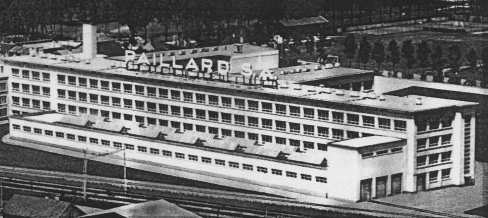
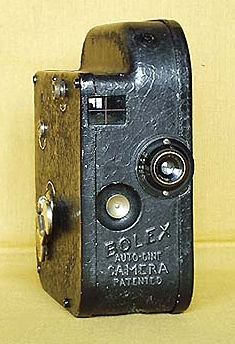 By
1935 a new milestone concept appeared - the Bolex H16 16mm camera retaining
the basic shape of the earlier Bol Auto Cine Camera B that Jacques designed.
It was, in fact a much more sophisticated animal, and proved so successful
that it continued, with steady improvement, right up to the present day.
In the UK Cinex was appointed as main agents and oversaw the introduction
of a huge range of cameras and accessories over the next 35 years.
By
1935 a new milestone concept appeared - the Bolex H16 16mm camera retaining
the basic shape of the earlier Bol Auto Cine Camera B that Jacques designed.
It was, in fact a much more sophisticated animal, and proved so successful
that it continued, with steady improvement, right up to the present day.
In the UK Cinex was appointed as main agents and oversaw the introduction
of a huge range of cameras and accessories over the next 35 years.
Paillard-Bolex cameras were not imported into the U.K. during the Second World War but they became available in the late 1940s, only to "Priority users for the production of films for medical, scholastic or industrial purposes". It was not until the middle of the 1950's that they were available without restriction; even then, the cameras were expensive due to the heavy tax levied on them when not used for "legitimate" filming. Some amateur film makers went to extraordinary lengths to register themselves as professionals to evade this tax.
1970 saw a period of company restructuring when Paillard sold the Bolex division to Eumig of Vienna. Bolex continued to operate under the name of Bolex International within the Eumig group and the research and development departments of Bolex and Eumig were integrated.
Many of the Super 8 cameras and projectors sold at that time under the Bolex name were based on Eumig models - they were not badged copies though, they had different styling and enhancements and were advertised separately from the Eumig products.
 During
the 1970s some Bolex Super 8 cameras were manufactured in Japan by Chinon,
these were the sound cameras and the cheaper XL mute cameras. Johnsons
of Hendon took over the Bolex agency from Cinex in 1970 and they them-selves
were taken over by Inimatra in 1977 to form Eumig (UK) Ltd. - this company
sold both Eumig and Bolex products for a time.
During
the 1970s some Bolex Super 8 cameras were manufactured in Japan by Chinon,
these were the sound cameras and the cheaper XL mute cameras. Johnsons
of Hendon took over the Bolex agency from Cinex in 1970 and they them-selves
were taken over by Inimatra in 1977 to form Eumig (UK) Ltd. - this company
sold both Eumig and Bolex products for a time.
Eumig filed for bankruptcy in 1981 after running into serious financial trouble, they were some 70 million in debt to the bank, partly as a result of extending their production capacity to accommodate the disastrous Polavision instant movie system.
The company had been maintained by the state owned Laenderbank since 1980 but the Austrian government prevented the extension of further credit. The Luxembourg based financial company Interbasic, which included the Italian firm of Sima (they had made some projectors for Bolex in the late 1960s), took over the Eumig name and produced some high quality Super 8 projectors under this logo for several years after. Eumig (UK) Ltd. carried on until the middle of 1982 when it reverted to its original name of Johnsons of Hendon and continued to sell Eumig products while they were still produced. The agency for Bolex in the UK was taken over by Pelling and Cross (later to become KJP - Keith Johnson and Pelling - no relation to Johnsons of Hendon, though) and Optex.
![]() The
managing director of Bolex International bought the 16mm business following
the closure of Eumig and founded Bolex International S.A. which continues
production of 16mm cameras and accessories to the present day. The range
of equipment available today is small compared to the heyday of the company,
with the SBM, EL and a couple of zoom lenses. A lot of current work is
to do with the manufacture and conversion of Super 16 cameras and lenses.
The
managing director of Bolex International bought the 16mm business following
the closure of Eumig and founded Bolex International S.A. which continues
production of 16mm cameras and accessories to the present day. The range
of equipment available today is small compared to the heyday of the company,
with the SBM, EL and a couple of zoom lenses. A lot of current work is
to do with the manufacture and conversion of Super 16 cameras and lenses.